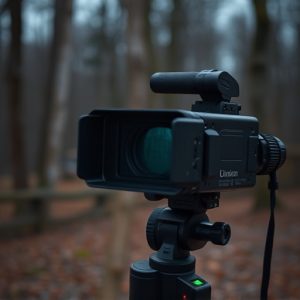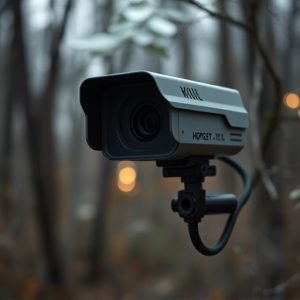Nighttime Spy Camera Glint Detection: Battling Outdoor Lens Reflections
Battery-powered spy cameras pose a growing threat in outdoor settings due to their compact size, wir…….
Battery-powered spy cameras pose a growing threat in outdoor settings due to their compact size, wireless capabilities, and long-lasting batteries. Disguised as everyday items, these clandestine devices enable continuous monitoring for extended periods. Advanced glint detection methods, leveraging algorithms and sensors, are crucial for identifying subtle flashes indicative of hidden camera operation, especially at night. These techniques mitigate challenges in environments with reflective surfaces and artificial lighting, ensuring effective covert surveillance through improved nighttime surveillance footage quality.
In today’s digital age, battery-powered spy cameras pose a unique and growing threat in outdoor settings. These clandestine devices, often hidden and designed for covert surveillance, can operate undetected, capturing sensitive information. The challenge lies in identifying their subtle presence, especially at night when the contrast between the camera’s lens reflection (glint) and surrounding darkness is minimal. This article delves into advanced techniques tailored to detect these elusive glints, offering crucial insights for navigating this modern security concern.
- Understanding Battery-Powered Spy Cameras: A Unique Threat in Outdoor Settings
- The Challenge of Nighttime Glint Detection
- Advanced Techniques for Camera Lens Glint Detection at Night
Understanding Battery-Powered Spy Cameras: A Unique Threat in Outdoor Settings
Battery-powered spy cameras represent a unique and growing threat in outdoor settings due to their compact size, wireless capabilities, and long-lasting battery life. Often disguised as everyday items like rocks, plants, or even wildlife, these clandestine devices can be easily hidden and activated remotely, making them difficult to detect. Their power source, typically rechargeable batteries, allows for continuous monitoring over extended periods, posing a significant challenge to privacy and security in public spaces.
In outdoor environments, where lighting conditions vary dramatically throughout the day and night, battery-powered spy cameras rely on subtle glints of light to reveal their presence. Glint detection methods become crucial here, as they help identify these tiny flashes that can indicate the operation of hidden cameras. By employing advanced algorithms and sensors, it’s possible to analyze outdoor environments in real-time, identifying and mitigating the risks posed by these battery-powered surveillance devices.
The Challenge of Nighttime Glint Detection
Nighttime glint detection presents a unique challenge for camera systems, especially those designed for outdoor use like battery-powered spy cameras. The low-light conditions and potential reflections from sources like streetlights or security lighting can make it difficult to distinguish between actual objects of interest and unwanted glints. This issue is further compounded by the fact that many outdoor environments are filled with a variety of reflective surfaces, from smooth pavements to bodies of water, which can produce intense glints that mimic movement or activity.
For battery-powered spy cameras designed for covert surveillance, accurate glint detection during nighttime operations is crucial. These devices often operate in remote locations where quick and reliable data analysis is essential for effective monitoring. Advanced image processing algorithms are employed to mitigate these challenges, analyzing patterns of light and dark areas within the frame to differentiate between genuine motion and false signals caused by glints.
Advanced Techniques for Camera Lens Glint Detection at Night
In the realm of covert surveillance, especially with battery-powered spy cameras designed for outdoor use, advanced techniques for camera lens glint detection at night are becoming increasingly important. These methods employ sophisticated algorithms and image processing capabilities to identify and mitigate the reflective glare often caused by moonlight or artificial lighting. By analyzing subtle variations in light intensity and patterns across the image sensor, these techniques can distinguish between genuine objects and unwanted lens glints, enhancing the overall quality of nocturnal surveillance footage.
One such innovative approach leverages deep learning models trained on vast datasets of night-time imagery, allowing them to learn and adapt to various environmental conditions. This enables the system to accurately detect glints and filter them out, ensuring that the captured video remains clear and unobscured. Additionally, the integration of advanced sensors and specialized lenses designed to minimize reflectivity further contributes to the effectiveness of these detection methods, making it easier to capture high-resolution imagery even under challenging night-time conditions.
In light of the growing prevalence of battery-powered spy cameras in outdoor settings, it’s crucial to understand and combat their unique threat. The challenge of nighttime glint detection is met with advanced techniques that leverage cutting-edge technology. By employing specialized methods, we can now accurately identify and mitigate the subtle lens glints these devices produce, enhancing security measures and ensuring peace of mind in our outdoor spaces.

